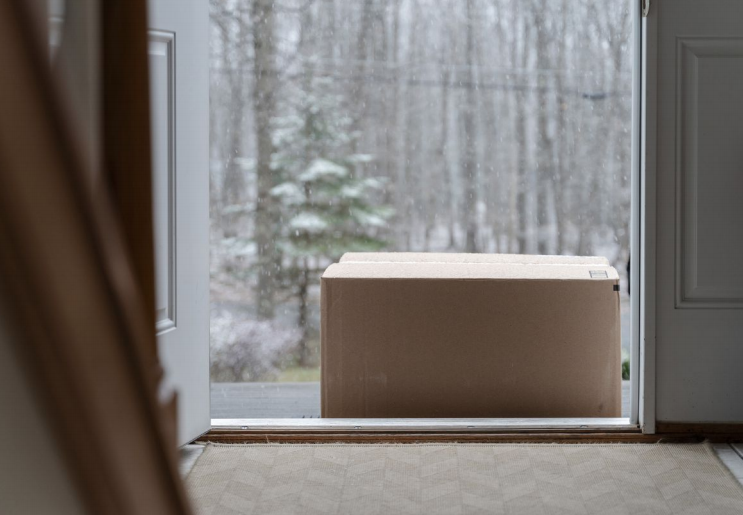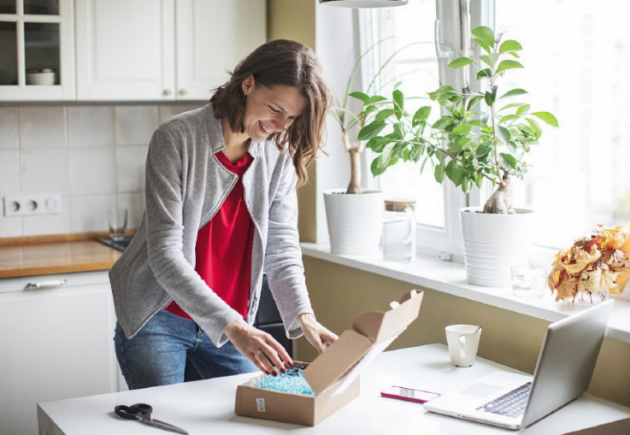
Features
Packaging
Printing
Packaging printing in 2021
Reaching beyond trends and embracing new realities
January 29, 2021 By Phil Bagdasarian
 Photo: Alex Potemkin / iStock / Getty Images Plus / Getty Images
Photo: Alex Potemkin / iStock / Getty Images Plus / Getty Images The e-commerce uptick sparked by COVID isn’t just a passing trend. The revolution is here. Even groceries, often considered the least penetrative of the e-commerce categories, are seeing a surge in online purchases that is unlikely to subside entirely after the pandemic. This shift is multi-generational. The baby boomers who were once resistant to online shopping have crossed over to the other side. They’ve discovered a world of convenience from which it’s hard to turn back.
So, what does the “retail apocalypse” mean for the packaging and printing world? While many businesses recently repurposed their operational costs as packaging budgets, others want to rethink their packaging strategies entirely. Everything from design trends to print media to supply chain is undergoing rapid transformation.
Shipping and returns: A new set of rules
When physical retail went on lockdown, many companies were suddenly presented with a new set of packaging rules. Businesses arriving late to the online scene were now confronted with different consumer touchpoints and contending with factors such as safe shipping and return-ready packaging.
Once upon a time, the product journey ended when the consumer stepped out of a store. Now, the onus is on the retailer to ensure goods arrive safe and sound. Companies are choosing to forego shelf-ready packaging for more practical, durable and shipping-friendly options.
Fashion e-commerce, in particular, is opting for packaging that enables easy returns. For many, the dressing room is now in the home, meaning returns no longer apply chiefly to defects or fussy consumers. Thanks to try-before-you-buy shopping, returns have become an integral part of the consumer journey.
The power of storytelling: Rethinking consumer touchpoints
Walk-in clients once represented the biggest sales opportunity for any retailer. Not so much the case anymore. Over the last decade, many retail giants were relegated to mere showrooms for their digital competitors. And today, the “showroom” itself has pivoted almost entirely onto the digital landscape.
Simply put, customer-initiated touchpoints no longer happen on the shelf; they happen on the screen. In turn, packaging serves a different purpose than it did just a few short years ago. Chances are, the first time a consumer handles a brand’s packaging is in the comfort of their own home—after they’ve already made their purchase.
Rather than serve as a sales pitch, e-commerce packaging must work to engage, encourage brand loyalty, and provide a cost-conscious wow factor. As a result, packaging that tells a story is likely to see even more momentum as we step into 2021.
We can turn to the mailer box as a tried-and-tested design with a bright future. Its opening and display-case design builds anticipation and crescendos with an engaging ‘ta-da’ moment. And given that printing both inside and outside the packaging is easy, mailer boxes offer businesses the perfect opportunity to communicate their brand mission and values at different stages of the unboxing experience, bolstering a deeper emotional connection with the consumer.
Design language: Keeping it simple
On the design front, we’re seeing a move toward flatter, geometric illustrations that strip down a brand’s messaging to its essentials. Bold and abstract, these designs represent a pivot from shelf packaging to e-commerce realities. No longer is it necessary to illustrate USPs and critical product info explicitly. After all, the purchase has already been made. These minimalist designs are all about leaving an impact.
From a practical standpoint, these designs are simply more cost-effective. They don’t rely on textured media, looking great on just about any printed material. Simply put, they let you transform a low-cost packaging solution such as a mailer box into a standout work of art. Minimizing colours, too, can save costs. Given this trend’s trajectory, we can expect to see even more black-and-white packaging in the months to come.
Short-run packaging: More orders, smaller quantities
Fulfilling small orders is the new normal. Whereas many shops used to reserve select items for e-commerce, the pandemic has forced them to put their entire product catalogues online. Often, distinct packaging must be developed for different product categories or, sometimes, even individual products—we’re talking quantities as low as the double digits!
Many businesses are turning to packaging printing companies that specialize in short-run jobs. Moreover, with a disrupted global supply chain, North American businesses are building relationships with North American packaging printers instead of relying entirely on countries overseas. Funnily enough, it’s the little guys emerging as the best equipped for this new packaging printing landscape.
New printing demands: The end of offset?
Okay, admittedly, this is just a catchy sub-header. The reality is that offset printing probably isn’t going anywhere for a while. But there is reason to believe that the outcome of the pandemic will favour digital packaging printing.
Final thoughts
Certainly, COVID has taught us many lessons—one of which is that we should be wary about making predictions. Let’s face it, we’re coming out of 2020 with a vastly different worldview than we had going in. That said, it’s likely safe to say that some roads ahead of us are already being paved.
At the end of the day, COVID has proven to be more of an accelerator than an all-out game-changer. Much of what’s being predicted now was already forecasted pre-pandemic. We can expect to see these market shifts arrive with heavier winds at their sails. We’ll see what happens!
Phil Bagdasarian is the co-founder of Packwire, an online packaging service that enables businesses to create their own box designs, including branded mailers, folding cartons, shipping boxes and gift boxes. The company serves small and large businesses alike and fulfills orders of as little as 10 boxes.
This article was originally published in the Winter 2020 issue of Packaging for Printers.
Print this page
